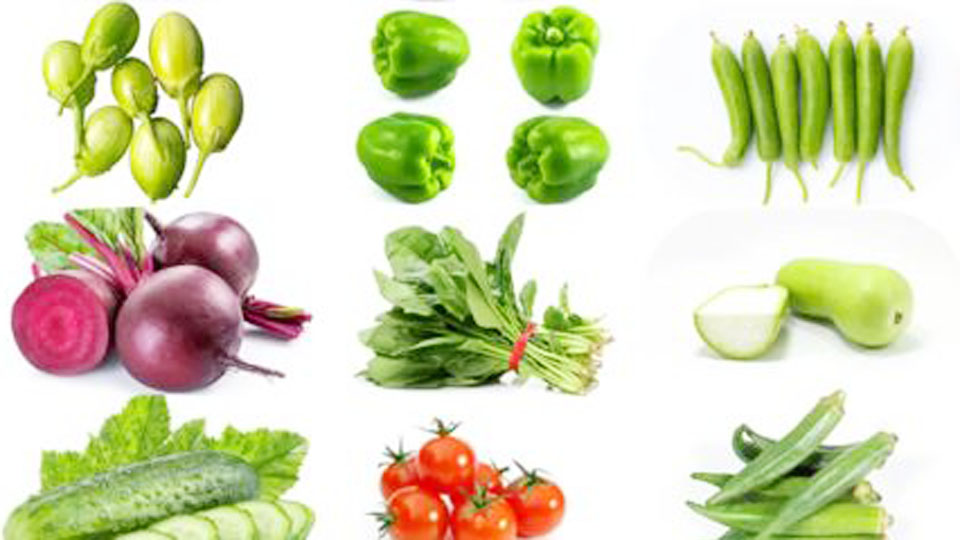Planting a vegetable garden can be one of the most rewarding experiences. There’s nothing quite like harvesting fresh produce right from your backyard or even your balcony. But here’s a secret I’ve learned over the years: timing is everything when it comes to growing vegetables.

Image by organicbazar
One of the first things I struggled with as a beginner gardener was figuring out when to plant each type of vegetable. I’d often plant too early or too late, only to be disappointed when my crops didn’t thrive.
I discovered the importance of using a planting chart to plan my garden. It’s like having a roadmap for your veggies, ensuring you get the best results possible.
I’ll break down everything you need to know about planting vegetables at the right time, complete with a handy chart to help you plan. Whether you’re a seasoned gardener or just starting, this guide will make the process a whole lot easier.
Why Timing Matters in Vegetable Gardening
The timing of your planting is crucial because vegetables have different requirements for temperature, sunlight, and growing conditions. Plant too early, and frost might damage your crops. Plant too late, and they might not have enough time to mature before the season ends.
Here are a few key reasons why timing is so important:
- Optimal Growth: Vegetables grow best within specific temperature ranges.
- Avoiding Frost Damage: Certain plants are sensitive to frost and need to be planted after the last frost date.
- Maximizing Harvest: Planting at the right time ensures you get the most out of your growing season.
- Preventing Pests and Diseases: Planting at the right time can help avoid peak pest and disease seasons.
Understanding the Planting Seasons
Vegetables fall into two main categories based on their preferred growing temperatures: cool-season and warm-season crops.
Cool-Season Vegetables
These vegetables thrive in cooler temperatures and can often be planted in early spring or fall. Some examples include:
- Lettuce
- Spinach
- Peas
- Broccoli
- Radishes
Warm-Season Vegetables
These crops need warmer soil and air temperatures to grow. They are typically planted after the last frost date in your area. Examples include:
- Tomatoes
- Peppers
- Cucumbers
- Squash
- Corn
How to Determine Your Planting Dates
The key to successful planting is knowing your local frost dates. In the USA, the last frost date in spring and the first frost date in fall will guide your planting schedule.
Here’s how to get started:
- Find Your Zone: Use the USDA Plant Hardiness Zone Map to determine your gardening zone.
- Check Frost Dates: Look up the average last frost date in spring and first frost date in fall for your area.
- Count Backwards or Forwards: Use the days-to-maturity listed on seed packets to calculate when to plant.
When to Plant Veggies Chart
I’ve created this simple chart to help you determine the best time to plant common vegetables based on your frost dates.
| Vegetable | Cool/Warm Season | Start Indoors | Direct Sow (Outdoors) | Days to Maturity |
|---|---|---|---|---|
| Lettuce | Cool | 4-6 weeks before | 2 weeks before last frost | 30-60 |
| Spinach | Cool | Not needed | 4-6 weeks before last frost | 30-50 |
| Tomatoes | Warm | 6-8 weeks before | 2 weeks after last frost | 60-80 |
| Peppers | Warm | 6-8 weeks before | 2 weeks after last frost | 60-90 |
| Cucumbers | Warm | Not needed | 2 weeks after last frost | 50-70 |
| Carrots | Cool | Not needed | 2-4 weeks before last frost | 50-75 |
| Beans | Warm | Not needed | 1-2 weeks after last frost | 50-60 |
| Broccoli | Cool | 6-8 weeks before | 2 weeks before last frost | 60-100 |
Indoor Seed Starting Tips
Some vegetables benefit from being started indoors before transplanting them into the garden. This is especially helpful for warm-season crops that need a head start.
Here’s what I’ve learned about starting seeds indoors:
- Use Quality Seed-Starting Mix: It’s lighter than regular soil and helps seeds germinate faster.
- Provide Adequate Light: Place your seedlings near a sunny window or use grow lights for 12-16 hours daily.
- Transplant Gradually: Before moving seedlings outdoors, harden them off by gradually exposing them to outdoor conditions over a week.
Direct Sowing vs Transplanting
Some vegetables are best planted directly in the soil, while others do better when transplanted as seedlings.
Direct Sowing
- Best for root vegetables like carrots, radishes, and beets.
- Also great for fast-growing crops like beans and peas.
Transplanting
- Ideal for warm-season crops like tomatoes and peppers.
- Helps extend the growing season for slower-maturing vegetables.
Seasonal Planting Tips
Each season comes with its own challenges and opportunities for gardening. Here’s how to make the most of each one:
Spring Planting
- Focus on cool-season crops like lettuce, spinach, and broccoli.
- Start warm-season seeds indoors so they’re ready for transplanting after the last frost.
Summer Planting
- Plant heat-loving vegetables like tomatoes, peppers, and cucumbers.
- Use mulch to retain soil moisture and keep roots cool.
Fall Planting
- Sow cool-season crops like kale and radishes for a late harvest.
- Cover plants with row covers to extend the growing season.
Tips for Extending Your Growing Season
If you want to enjoy fresh vegetables beyond the traditional growing season, here are a few tricks I’ve used:
- Use Row Covers: These lightweight fabrics protect plants from frost and pests.
- Build a Cold Frame: A simple structure made of wood and glass traps heat and extends the growing season.
- Plant Successively: Sow seeds every 2-3 weeks for a continuous harvest.
Common Mistakes to Avoid
When I first started gardening, I made plenty of mistakes. Here are some common ones to watch out for:
- Planting Too Early: Be patient and wait until the soil is warm enough.
- Ignoring Days-to-Maturity: Make sure your vegetables have enough time to grow before the first frost.
- Overcrowding Plants: Give each plant enough space to thrive.
Conclusion
Timing is everything when it comes to vegetable gardening. By understanding your local frost dates and using a planting chart, you can create a garden that thrives throughout the year.
If you’re growing cool-season greens in the spring or warm-season tomatoes in the summer, planning ahead ensures you get the best results.
Starting a vegetable garden is such a rewarding journey. I hope this guide helps you feel more confident about when to plant your veggies. With a little patience and planning, you’ll be harvesting fresh, delicious produce in no time.
FAQs
Can I plant vegetables year-round?
Yes, with the right setup and seasonally appropriate crops, you can grow vegetables year-round.
How do I know when my last frost date is?
You can check online resources or contact your local extension office for frost date information.
What vegetables are easiest to grow for beginners?
Lettuce, radishes, and green beans are great choices for beginners.
Can I start seeds indoors without grow lights?
Yes, but make sure they receive plenty of natural sunlight from a south-facing window.
How do I protect my plants from a late frost?
Cover them with blankets, row covers, or plastic sheets to trap heat overnight.
What’s the difference between cool-season and warm-season crops?
Cool-season crops thrive in cooler temperatures, while warm-season crops require heat to grow.

I’m Marissa Lynn, the proud author behind GardeningProperty.com! With a deep-rooted passion for all things green and growing, I’ve dedicated years to mastering the art and science of gardening.
From nurturing vibrant flowerbeds to cultivating thriving vegetable gardens, I love sharing practical tips, creative ideas, and proven techniques to help others create their dream outdoor spaces.